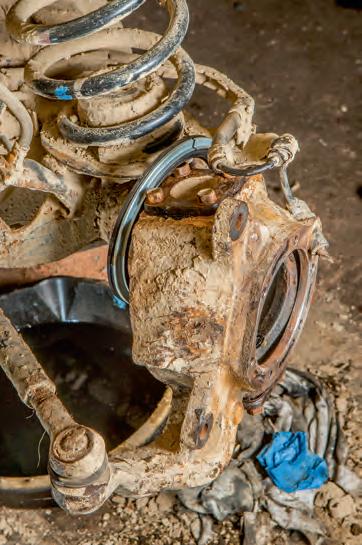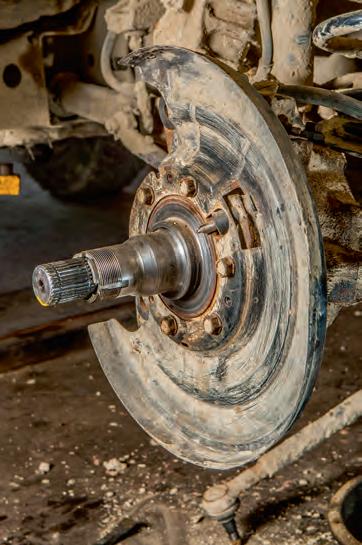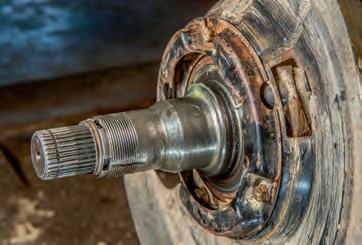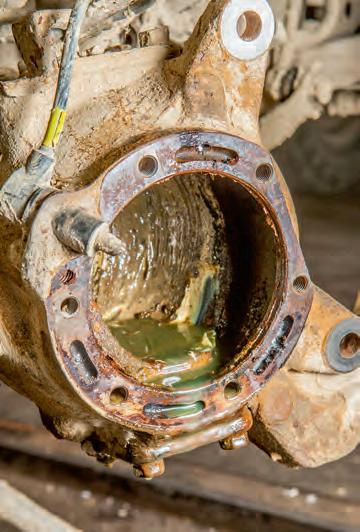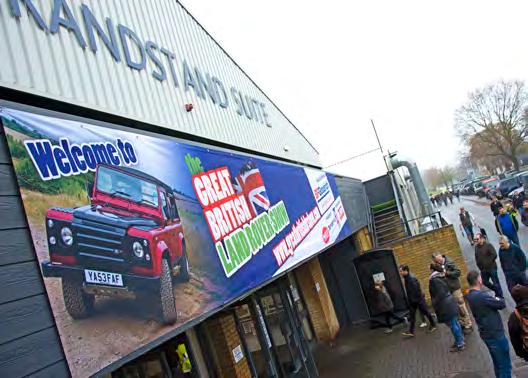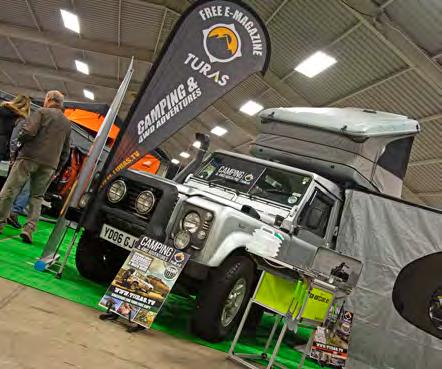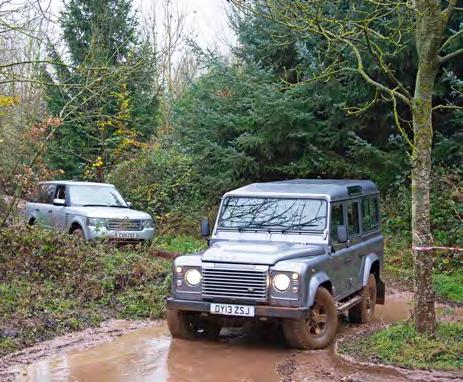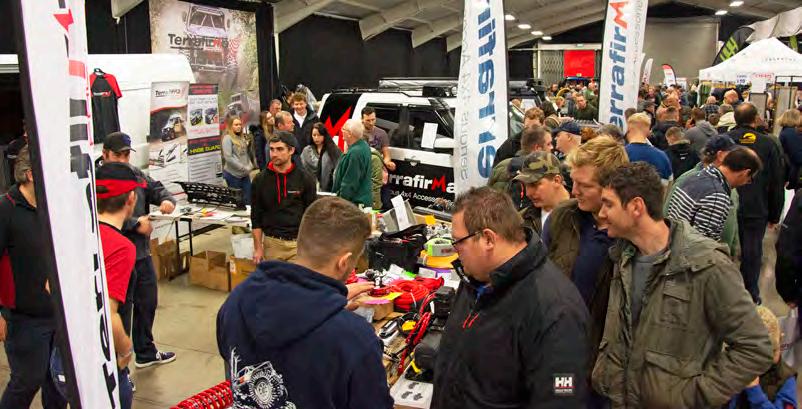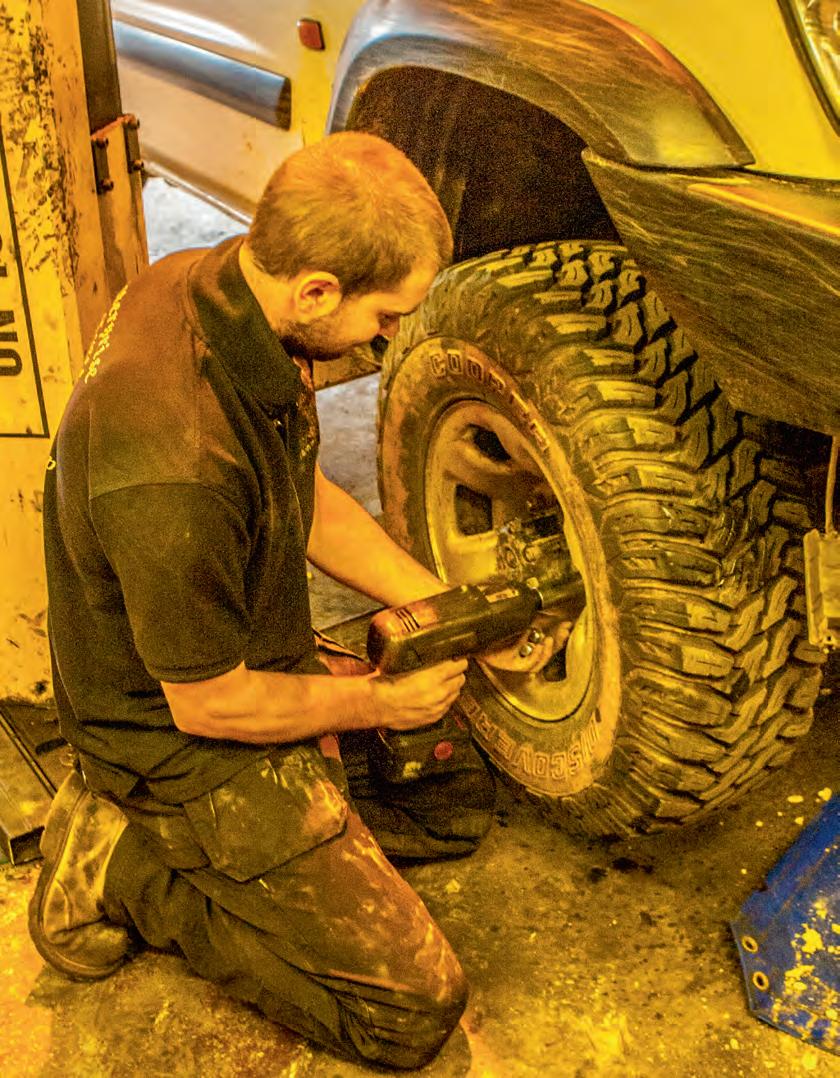
7 minute read
The Perils of Neglect Inside a horribly abused Nissan Patrol front axle
The Axle-man Cometh…
THE NISSAN PATROL was never an enormous seller in the UK. But off-road enthusiasts, and indeed anyone else who just appreciates a proper old truck when they see one, have always respected it for the honest way it used to about its job. It was one of the last big 4x4s to stick with beam axles front and rear, and its brute strength and robust engineering put it right up there with the Toyota Landcruiser for sheer indestructibility.
Advertisement
These days, Patrols are a real rarity. Even before they went off sale in Britain (which, just in case you were needing something to help make you feel old, was now more than ten years ago), second-hand examples were being bought up and exported to Eastern Europe – where they’re much more part of the offroading mainstream.
That of course means the number still in Britain has been constantly diminishing. Which has driven up prices – not necessarily of the vehicles themselves (though they do make strong money), but of their axles. That’s where the value is in what looks like an otherwise rough Patrol. They’re immensely strong – capable of taking the sort of shock loads you create when putting a V8 engine’s worth of power and torque through a superaggressive 40” tyre on savagely uneven ground – and famously willing to put up with abuse.
But not even a Patrol axle is invulnerable. Bury it repeatedly in acidic, abrasive mud, dunk it relentlessly in freezing cold water and give it absolutely no maintenance at all, and guess what’s going to happen?
The photos on these pages show the front axle from a 2004 model-year Y61 Patrol being dismantled for investigation work. You can see from the state of the chassis and suspension around it that the vehicle must have been taking a pasting off-road in the period leading up to this – and getting precious little in the way of cleaning in return. As you can possibly tell from the colour of the mud, it’s not the kind you find in woodlands – it’s quarry mud, basically dried-on limestone sludge that’s abrasive as hell and sets like concrete. Lovely.
The investigations began after the Patrol’s driver started hearing a clicking noise on full lock that strongly suggested a CV joint was not long for this world. As you’ll see from the state of what the guys
Here’s the offside stub axle, with the hub and wheel bearing removed. As you can see, there’s a certain amount of muck in there, mixed with oily, greasy seal debris. You can also see an element of surface corrosion starting on the stub




Above left: With the drive flange removed (or in this case the freewheeling hub), the wheel bearing locking arrangement can be seen: a ring with a screw to jam the lock ring and stop it unscrewing. Simple, but not infinitely adjustable, relying on a convenient hole in the lock ring arriving close to where you have float in the bearing Above centre: Pausing only to remark to yourself upon the extraordinary amount of crap stuck to every available surface of the Patrol’s underside, get ready for a game of now-you-see-it-now-you-don’t… Above right: First, it’s bye-bye caliper. This was suspended from the spring to avoid disturbing the pipework and to save having to bleed ABS brakes when building it all back up Below left: Next, the hub assembly is removed complete with the brake disc Below centre: Now we’re having fun. The ABS dust shield and hub back plate have joined the collection of grotty parts on the floor Below right: Finally, it’s adios stub axle, leaving a sight many men will look at and tell themselves they’ll never touch another drop…
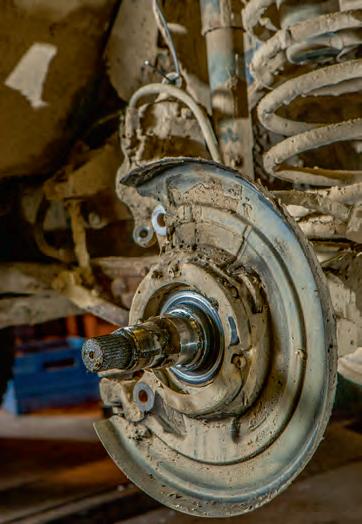
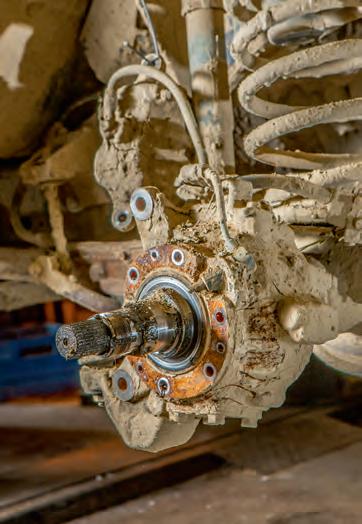
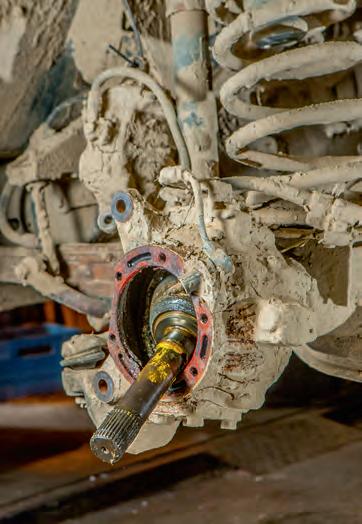
in the workshop found when they opened it up, anything still alive in the axle was doing well not to have run up the white flag. Oddly, though, the CVs seemed okay.
Eventually, it began to appear as if the Patrol’s freewheeling hubs were the most likely source of the clicking noises. Could one of these be on the way out? After a series of mends and make-do’s, it seemed prudent to renew them and so off they came to be replaced by proprietary new set.
This did seem to fix the problem. But then a hundred yards into the first test drive, guess what happened? That’s right, one of the CV joints blew.
As we’ve just pointed out, it’s not what you’d call a surprise to see anything failing in the sort of environment this Patrol’s axle had come to contain. Proof that no, they’re not maintenance-free – though also that if you do prevent yours from getting into a state like this, it’ll probably last forever…
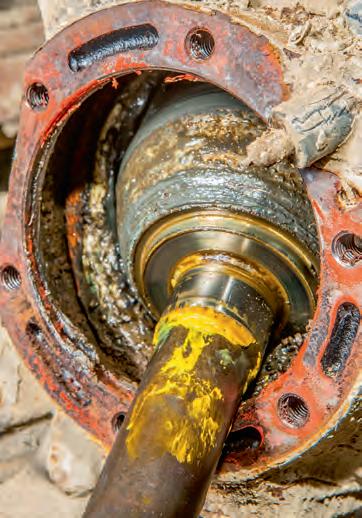
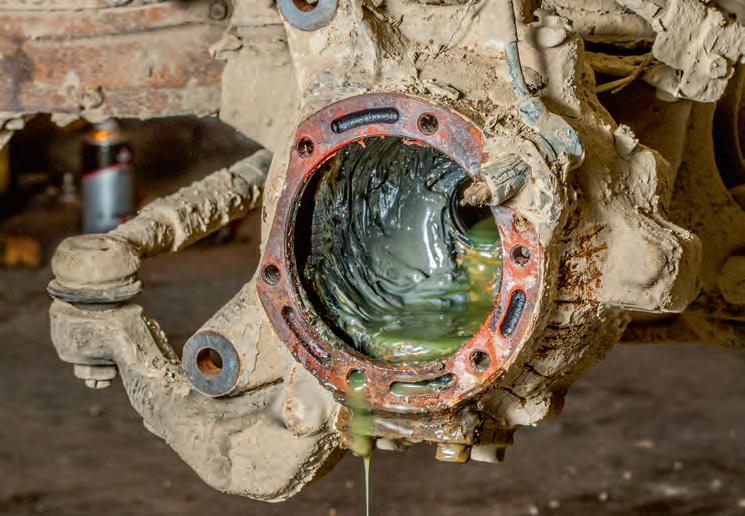
Above left: At this point we paused to marvel at the fact that the ABS was still working at all, and also at the monumentally varied collection of grease-encrusted geology inside the swivel itself. To avoid disturbing the ABS sensor, which looked as though it might die, we decided to leave it in situ and suspend the swivel housing out of the way, taking care not to damage the ABS sensor lead. This requires both the kingpins and the swivel seal to be removed Above right: With the CV and drive shaft removed, the colourful extent of the horror inside the swivel can be revealed; if you’re thinking it looks like a main sewer, or a portal to hell, we’re with you. In a shock move, the swivel seal has well and truly given up
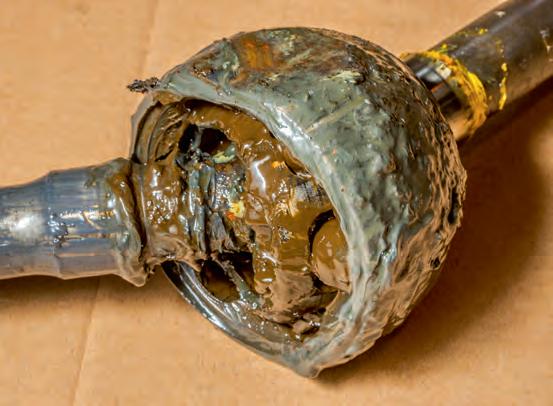
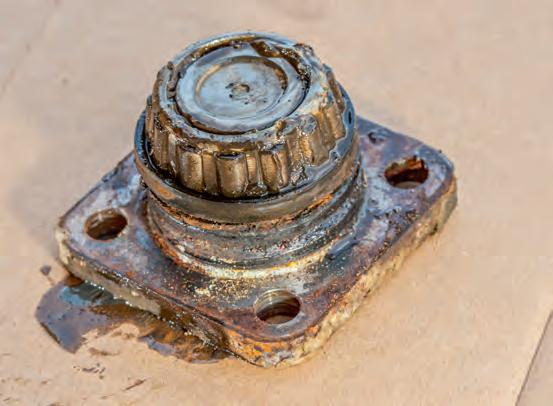
Above left: The self-same magic potion of soil, dust, clay and grease has taken up residence in the CV, too. This is not a pretty sight Above right: Immediately after being removed, the top kingpin bearing isn’t looking too handy either Below left: Here are the kingpin bearings after getting stripped and cleaned up. Note the corrosion on the bottom unit, to the left here Below right: Here’s the same bearing a stage or two further on, with new O-ring seals and bearings fitted


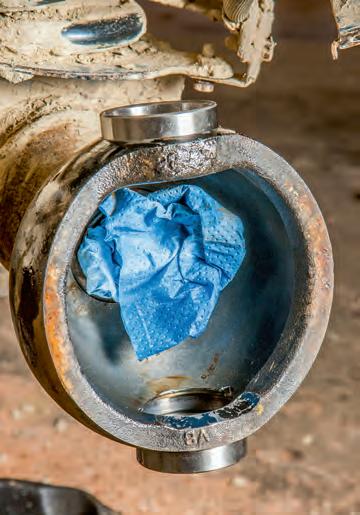
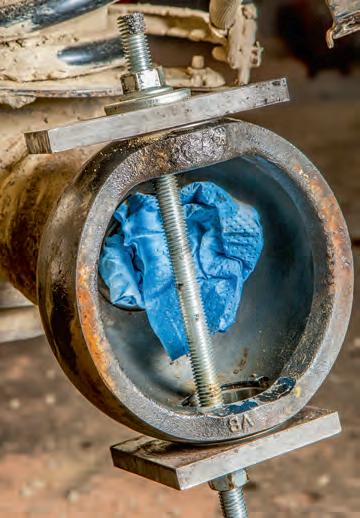
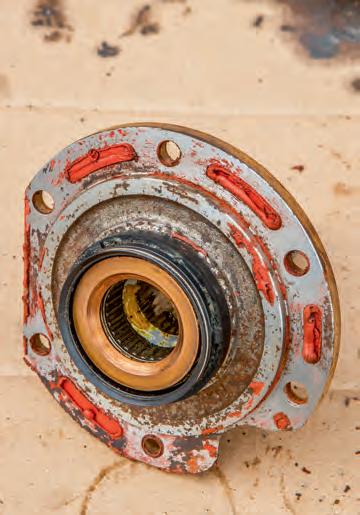
Above left: Finally, something that doesn’t look horrific. Unless you’ve got a medically inexplicable phobia of blue roll, that is. What you see here are the new fixed races for the kingpin bearings placed in position. The hopefully-not-offending paperwork is there to keep muck out of the axle tube Above centre: Patrol swivels don’t separate from the axle tube like those of a Land Rover, meaning there isn’t really an option to place them in a press. So a press must be brought to them. In this case, a home-made but very effective arrangement of steel spreader plates, threaded bar, washers and nuts is used to press the new fixed races into the swivel Above right: The stub axle could be said to require a bit of tidying up. Just possibly. The old instant gasket material needs to be removed, and the seal between the stub axle tube and swivel housing has to be dealt with
Above left: On the way back together now, the swivel seal goes on first, then the swivel housing. Here, the track rod has been offered up to help locate the housing Above centre: As Mr Haynes would say, refit is the reverse of removal. This is the swivel rebuilt, with the drive shaft and CV assembly, stub axle and backing plate fitted. As yet, though, the ABS shield has not been offered up Above right: And now it has. Here, the ABS dust shield is back in place: irrespective of what vehicle you’re working on, at this stage of the job you need to remember that if there are any shims for end-float on the halfshaft, you need to refit them too Right: And here’s what we found in the nearside swivel. You’ll be getting the idea by now…
